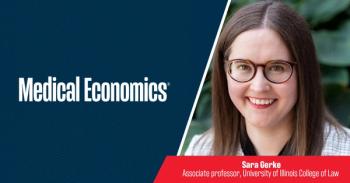
No matter the pressure applied, independent physicians will survive
To say it is not easy to be a physician today is a gross understatement.
When I first started covering healthcare, I spoke to a doctor at my first medical conference for a story on the imminent death of independent practices.
The doctor, an 80-year-old family physician, looked at me, cocked his head and asked: “Do you think private practices are doomed?” I replied that the data indicated more mergers and acquisitions by hospitals and health systems, so at this current rate, the future looked bleak.
The doctor politely put his hand on my shoulder, leaned in and said the following: “Son, private practices are like coal. They are sometimes rough, sometimes a little dirty, and often used to fuel ‘the machine,’ but when you apply pressure, they turn into a diamond and shine. We aren’t going anywhere.” He then walked away, having clearly been offended by my naïve observations.
Since then, I’ve come to better understand and appreciate the resiliency of independent physicians. And as you all know, mine was not the last “end of private practice” story ever to grace a publication.
But like that doctor said, they haven’t gone anywhere and continue to shine despite an enormous amount of pressure.
A new report by consultancy Avalere Health and the nonprofit Physician Advocacy Institute (PAI) indicates that hospital acquisition of these practices continues to rise (5,000 practices acquired between July 2015 and July 2016 marking a fourth consecutive growth year) as does physician employment by hospitals (an 11 percent increase over the same time period).
Robert Seligson, the PAI’s president, noted the difficulty in remaining independent.
“Payment policies mandated by insurers and government heavily favor health systems, creating a competitive advantage that stacks the deck against independent physicians,” he said in a statement.
He’s right. Look no further than various attempts by CMS to “group” physicians in its value-based payment initiatives and encourage strength in numbers to make data collection and reporting easier.
And I won’t get into the myriad challenges independent physicians-all physicians, really-face with less time to see patients, more time needed in front of a keyboard than in an exam room, and the onerous obstacles imposed by payers. To say it is not easy to be a physician today is a gross understatement.
But I think of that doctor, the man who looked me straight in the eye and that had likely seen thousands of patients over the years and his resiliency. He didn’t care about data. He didn’t care about what some young man thought was going to happen in the future. He cared about his patients and his business and that was his singular focus.
No, independent practices aren’t going anywhere, despite the data and the reimbursement and technological environment. Through the long hours in an office, the added hours at home, and the extra hours on the phone to explain treatment rationales to a payer.
Despite it all, independent practices will continue to shine.
Keith L. Martin is editorial director of Medical Economics. What do you see as the future of independent practice? Tell us at [email protected].
Newsletter
Stay informed and empowered with Medical Economics enewsletter, delivering expert insights, financial strategies, practice management tips and technology trends — tailored for today’s physicians.







